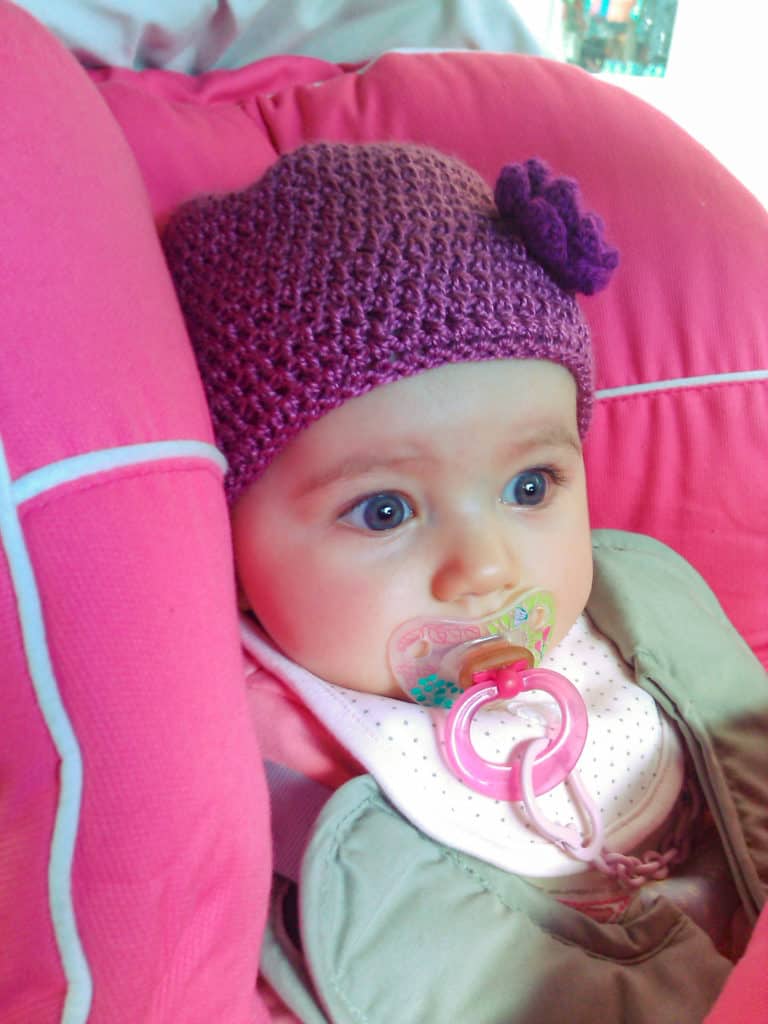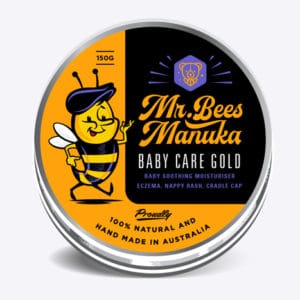Cradle Cap is a condition millions of babies and children experience each year worldwide. The severity of it varies from baby to baby, and different symptoms can develop which include scaling over the scalp.
Here Is How Cradle Cap Can Block Hair Growth:
It is rare but can happen to some babies. Some children develop Seborrheic Dermatitis combined with cradle cap and this can cause hair loss. Seborrheic Dermatitis prevents hair from growing due to increased oil production on the scalp.
To learn the details on hair growth and cradle cap then please read on!
- Here Is How Cradle Cap Can Block Hair Growth:
- Does Cradle Cap Block Hair Growth?
- How Can I Grow My Hair After A Cradle Cap?
- Can Cradle Cap Damage Hair Follicles?
- Can Cradle Cap Cause Bald Patches?
- How Do You Get Rid Of The Cradle Cap Without Losing Hair?
- Is It Better To Wash Hair More Or Less With Cradle Cap?
-
Baby Care Gold 150gm$37.00
Does Cradle Cap Block Hair Growth?
Although it’s rare, Cradle Cap can block hair growth or promote hair loss. It can make your hair relatively matted, but the condition won’t lead to long-term hair loss or baldness.
Usually, the hair will grow back when this health condition goes away.
Cradle cap is a normal, benign condition in young babies. When this condition affects adults, teenagers, and children, it’s referred to as Seborrheic Dermatitis.
The primary indicator of this condition is the scaling of the scalp.
But, it can sometimes be indirectly linked to hair loss. Rubbing the scalp/skin affected with cradle crap can cause the scales to come off or loosen. These scales can come off with hair clumps.
The development of these scales on the scalp can also limit the potential of your hair growth.
Seborrheic dermatitis can prevent your hair from growing due to increased oil production, which causes scalp inflammation, irritation, and itchiness.
Scratching your scalp can make your hair fall out, damage the follicles, or block hair growth. However, with proper care and medication, your hair will go back to growing normally when the problem completely wears off.

How Can I Grow My Hair After A Cradle Cap?
Losing hair due to cradle cap isn’t too scary as the hair will grow back after the condition clears off. However, the steps you take to ensure your hair’s growth can significantly determine its health, length, and volume.
Below are the six most effective ways to grow your hair after cradle crap:
- Regular use of shampoo
Washing your hair or your baby’s hair regularly with shampoo can help loosen cradle cap scales and clean your head. However, it’s advisable to use a gentle shampoo and lukewarm water.
Accumulation of too much dirt on the scalp can lead to dryness, resulting in slow hair growth.
2. Gentle and frequent brushing
Gentle brushing, combing, and massaging the scalp can promote hair growth since it can loosen up the cradle cap scales and remove dry skin. Brushing also encourages blood circulation to the hair follicles and scalp.
3. Use coconut oil
Using coconut oil enriches your scalp with natural vitamin E, a nutrient known for its high antioxidant properties. Applying the oil is beneficial to the skin and enhances hair growth by boosting blood circulation.
It also prevents hair loss and makes the hair look shinier.
For thicker and fuller hair, gently massage coconut oil into your scalp 2-3 times weekly. Doing this will not only keep your hair moisturized but also eliminate seborrheic dermatitis.
(Mr Bees Manuka Baby Care Gold contains coconut oil within the cream so keep this in mind)
4. Detangle hair
The cradle cap condition can make your hair tangle and develop knots, which can break off and cause your hair to fall out. Detangling your hair every day using a soft brush can help with hair growth.
5. Stick to a healthy diet
A proper diet is critical for hair growth. Foods rich in protein, zinc, vitamins D, B, and A, and iron are the best choices for thicker, fuller hair.
Examples of foodstuffs rich in vitamin A are mango, carrots, pumpkin, and butternut. Good foods for vitamin B are beans, eggs, whole grains, and potatoes.
Vegetables are good sources of iron, which can help transport oxygen and blood to the follicles and boost growth.
6. Use gelatin
Gelatin can boost your hair growth if you use it to the scalp directly.
Mix gelatin with water, add a teaspoon of apple cider vinegar and manuka honey, and apply the mixture to your scalp. Let it sit for approximately 10-15 minutes before rinsing it out with a mild shampoo.
Apple cider promotes hair growth, while honey restores nutrients to the scalp and hair since it’s an antioxidant.
-
Baby Care Gold 150gm$37.00
Can Cradle Cap Damage Hair Follicles?
Yes, Cradle Cap can damage hair follicles, but it’s usually a preventable condition. You’re more likely to damage our hair follicles if you start picking the affected area.
It can be hard to notice the damage caused by picking into a cradle cap area since the damage occurs underneath the skin surface, obstructing smooth hair growth.
Using harsh products and rough washing/brushing techniques can promote the deterioration of the hair follicles.
Hence, you’re always advised to use soft brushes, rubbing/friction, use the correct cradle cap shampoos and conditioners, and oil your scalp before detangling it to avoid damaging your hair follicles.

Can Cradle Cap Cause Bald Patches?
The simple answer is yes. Severe cradle cap cases can cause bald patches. Sometimes, when removing the scales, the hair can come off as clumps, leaving bald patches on the scalp if you’re not careful enough.
This issue is common in kids, who still have tender scalp and hair follicles that are easily subjected to physical stress.
To prevent this from occurring, it’s always best you lubricate the affected area on the scalp natural with cream, oil, or lotion before brushing the scales off.
-
Baby Care Gold 150gm$37.00
How Do You Get Rid Of The Cradle Cap Without Losing Hair?
Cradle Cap usually doesn’t require treatment. It can clear up after some time; however, it can be chronic. Several remedies and medications can help you treat cradle cap faster and more efficiently without losing hair.
However, these solutions may vary based on your age and the condition’s severity. You can either opt for home remedies or natural cream/shampoo.
Below are the most effective ways to get rid of cradle crap without losing hair for adults and infants.
Infants:
In most cases, cradle cap symptoms in babies often disappear on their own. The best OTC treatment for young children is usually a gentle shampoo which you’ll apply on the scalp.
In addition, you’d want to include a product that can loosen the scales, for example a cream that contains only natural ingredients.
The healthcare provider can also recommend you continue with this regimen for a more extended period to prevent reoccurrence.
Brushing the scalp with a cradle or soft brush can also help loosen up the scales. You should avoid using a stiff brush or picking the scales to prevent harming the scalp or damaging hair follicles.
If the OTC treatment doesn’t work, a prescription may be necessary. Although it’s uncommon, young babies may require a prescription to get rid of this condition. (see your doctor if necessary).
For severe cases, you can be advised to utilize slightly stronger shampoos or apply lotion on the scaly area.
However, you should use the lotion/oil first before the shampoo since leaving oil on the affected area can promote the development of more scales or inflammation.
Adults:
Like in infants, mild seborrheic dermatitis cases can also disappear on their own.
If treatment is necessary, over-the-counter dandruff shampoo and other OTC prescriptions can help clear up the symptoms.
Some of the common treatments for adults are:
Dandruff shampoo
The best ingredients for such shampoos are aloe vera, vitamin E, Manuka honey, Oatmeal. You should highly avoid ingredients with parabens, phenoxyethanol, sulfates, and alcohol.
Antifungal medication
You may be prescribed a pill
Ointments or creams
Some of the most effective options for this condition is using a natural skincare cream, see mr bees manuka baby care gold or kreme plus
It is important to note that cradle cap can be chronic; hence, it’s essential to follow the recommended regimen to the latter to keep the flare-ups in control.

Is It Better To Wash Hair More Or Less With Cradle Cap?
It’s advisable to wash hair less often if you have Cradle Cap, usually every 2-3 days. Although it can be tempting to wash your head more frequently to remove Cradle Cap, it’s not always the best step to take.
Washing your scalp and hair more often can make your skin dry. Dried skin usually causes the sebaceous gland to produce excess oil, which might be the primary reason behind the condition in the first place.
The type of detergent you use also matters a lot. Washing your hair less frequently but with the wrong shampoo won’t help your hair; it will only make it drier. So, it’s good to ensure you’re using mild-based hair shampoo.
On the days you’re not washing your hair, you can apply oil on it to loosen the scales and massage gently, then comb/brush with a soft-bristled brush to keep it detangled.
Conclusion
Cradle cap is a common issue to kids and adults. It’s my hope that I’ve answered your questions about this condition and put your mind at ease knowing that the Cradle Cap effect on hair loss and growth is only temporary.
It’s also a non-contagious infection that’s rarely itchy/uncomfortable. It’s also not caused by poor hygiene, infection, fungus, or allergy, and it doesn’t leave any scars behind.
To effectively get rid of cradle cap without losing hair, it’s recommendable to use the right shampoo, a soft-prickled brush, and the right oil, lotion, cream.
You should also avoid picking the affected area as it can damage the hair follicles, resulting in bleeding, or worse, an infection.
-
Baby Care Gold 150gm$37.00


